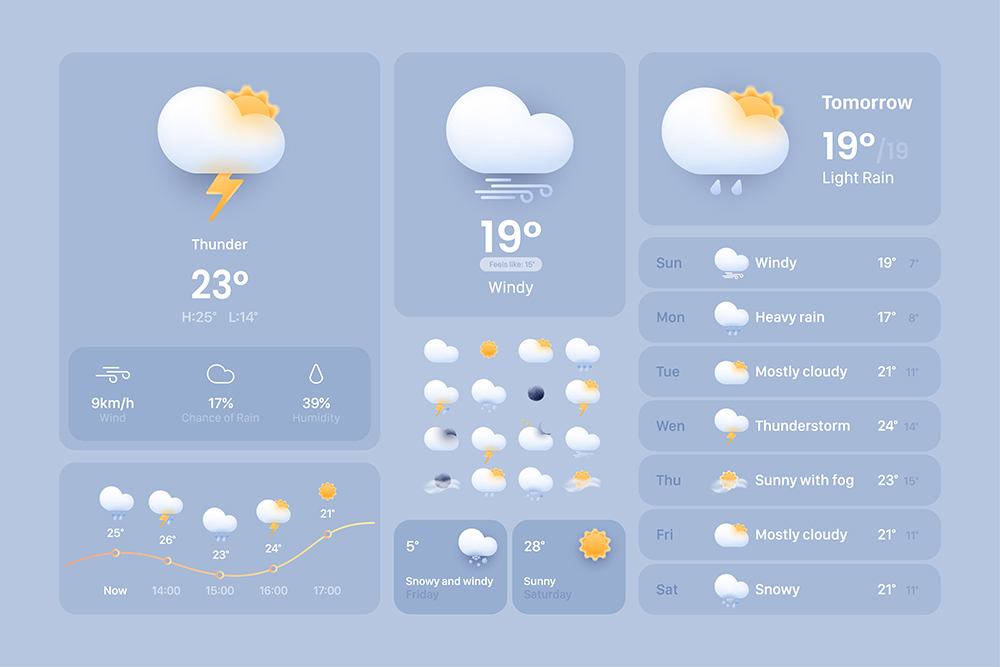In the Midwest, it’s starting to cool off. Cooler temperatures mean we can finally open our windows and, no matter if we’re relaxing at home or cruising on the road, we can enjoy that cool, crisp fall breeze. With that being said, we’ve had a blustery few days lately making high wind truck driving a concern!
This made us think about what it’s like driving a truck on the highway in high winds — or just windy conditions in general. It’s a topic that’s not touched on as often as it could be. After some of our team members experienced a Derecho in Iowa back in 2020 (which is essentially a land hurricane) we think this is an essential topic to discuss.
Driving a semi-truck trailer in windy conditions can be intimidating, nerve-wracking and, at times, very dangerous. Semi-trucks can weigh anywhere from 35,000 – 80,000 pounds; driving such a heavy piece of equipment in high winds can be a recipe for disaster.
How windy does it have to be for a semi-truck to flip over?
There are a few different things to keep in mind when looking at the wind speed it would need to be for a truck to flip over. First, the truck’s total weight. Obviously a fully loaded trailer at 60,000 lbs will be more difficult to flip than, say, an empty trailer that weighs 32,000 lbs.
Second, you need to consider the wind’s direction. A crosswind is a wind that blows perpendicular, or across, from the direction your truck is traveling. Crosswinds are much more dangerous to semi-trucks compared to a headwind; which blows directly against the direction of travel, or, a tailwind; which blows with the direction of travel. Wind speeds of about 60 mph or higher can potentially flip a semi-truck. But drivers need to be cautious any time the wind approaches, or exceeds, about 40 mph.
What safety tips should I keep in mind if I’m driving my truck on the highway and it gets really windy?
If you drive a semi-truck, there’s a few potentially lifesaving safety and accident prevention tips you can follow when driving in windy conditions:
- Do NOT try to pass other vehicles or make any sudden lane changes.
- Be aware of your surroundings and practice extreme caution when driving near bridges, overpasses, or tunnels.
- Keep your hands gripped tightly on the wheel.
- Drive slower than you typically would, getting to your destination on time is not worth risking your life, or anyone else’s.
- When there’s no oncoming traffic, use your low beams — it could help you see better.
- If you’re struggling to see anything, or if your line of sight is limited because of blowing dust, snow, or rain; slow down even more.
- If you’re safely able to do so, you can also choose to pull off the highway and into a safe location so you can park and wait it out.
- With that being said, avoid parking under trees because they may be uprooted by high winds and cause damage to your vehicle.
- Drive your truck close to the shoulder; wind speed and direction can change abruptly, so it’s important to keep your truck closer to the shoulder than it is to the other lane. If the wind starts to affect your ability to drive straight in your lane, it’s better to have the trailer move on the shoulder side as opposed to the side where there are other vehicles passing by.
- Lastly, if you are driving with no trailer, you need to find a safe place to exit the highway and park your truck immediately, the lighter the load (or lack thereof) the easier it will be for you to tip over so semi’s with no trailers are at high-risk.
How do I safely pull off the highway if it gets too windy, where is the safest place for me to go?
If strong winds suddenly blow across the highway you’re driving on, and you no longer feel confident in your ability to safely drive through it, you need to pull off the road and park your truck in a safe lot. Rest areas, truck stops, or even a large parking lots are all solid options for waiting out the windy conditions safely. If possible, park with your trailer facing the wind head-on to reduce the possibility of your trailer flipping.
Remember that you can always use your CB radio to talk to other drivers who might be more familiar with the area or more experienced at driving in strong winds than you are. Communicating through your CB can be a valuable resource when you’re already on the road.
Any other extra safety precautions I should take if it might be windy the day I have to drive?
Another wind safety measure you can take is to download a reliable weather app on your phone and check the weather frequently — as long as you’re safely able to do so. The last thing you want is to be caught by surprise in the middle of your trip. If you notice the wind will be blowing dangerously fast the route you’re planning to drive, you may be want to consider taking an alternative route to your destination. If there is a safer route that doesn’t involve driving through windy stretches of highway, you can detour yourself before you get on the road. Driving your semi-truck in high winds is no joke. Being prepared, being cautious, and being reactive are essential when potentially driving your truck in windy conditions. Make sure you follow these precautions on the road and ALWAYS have your seatbelt fastened while driving. It may just save your life someday! So, drive safe, obey all local laws and regulations, and pay attention to any signs warning of adverse driving conditions.





